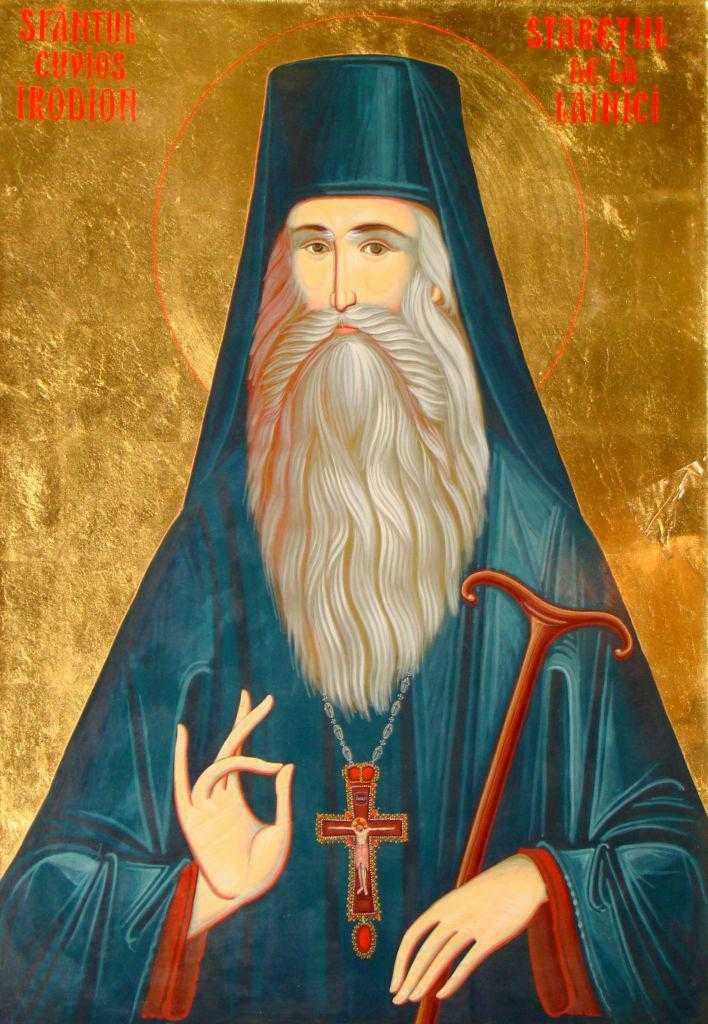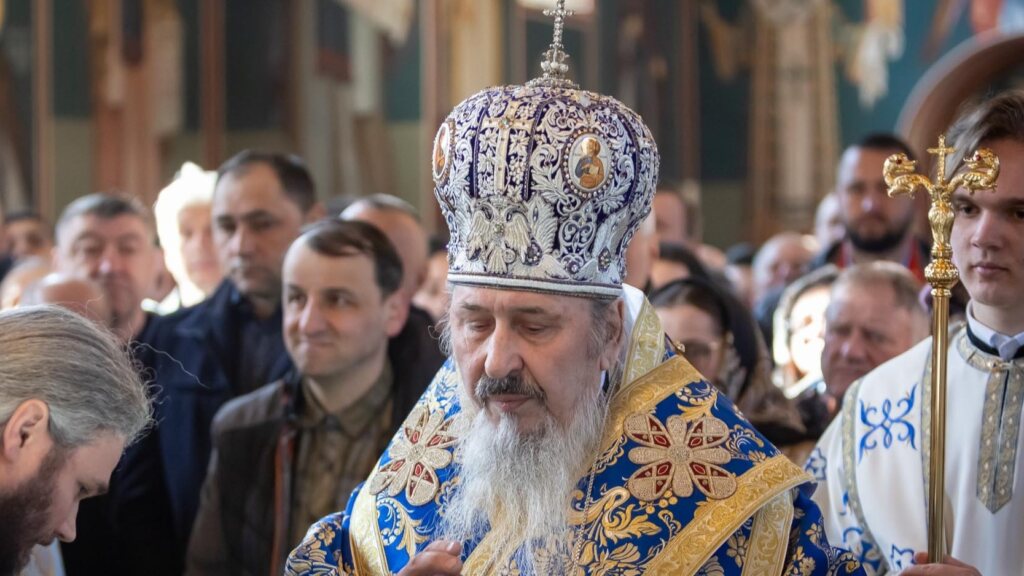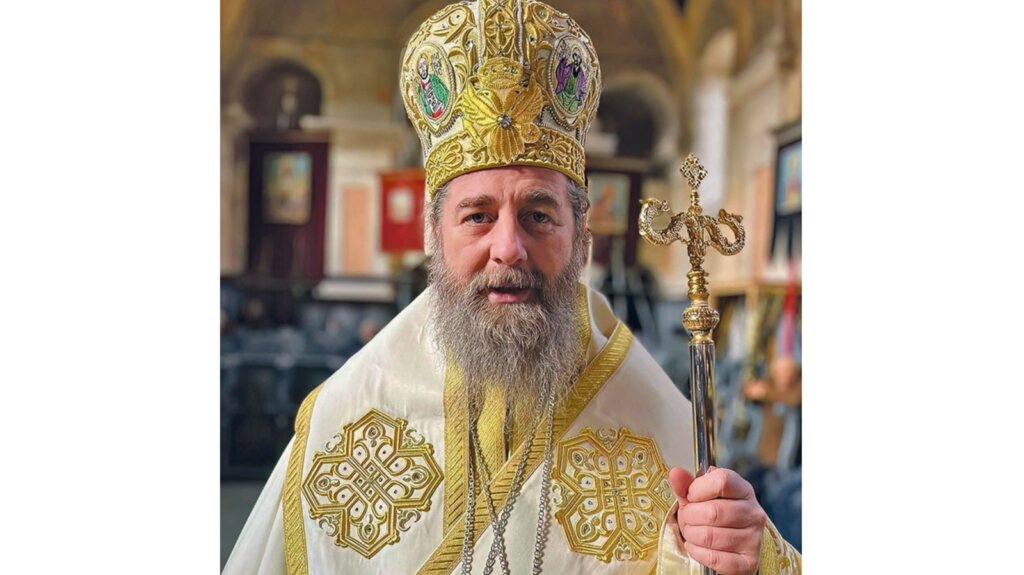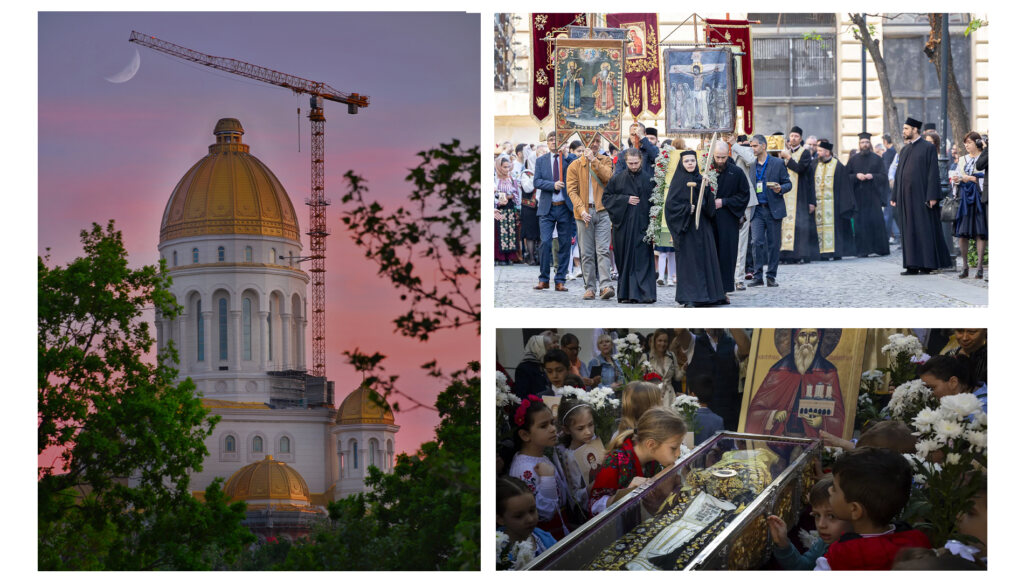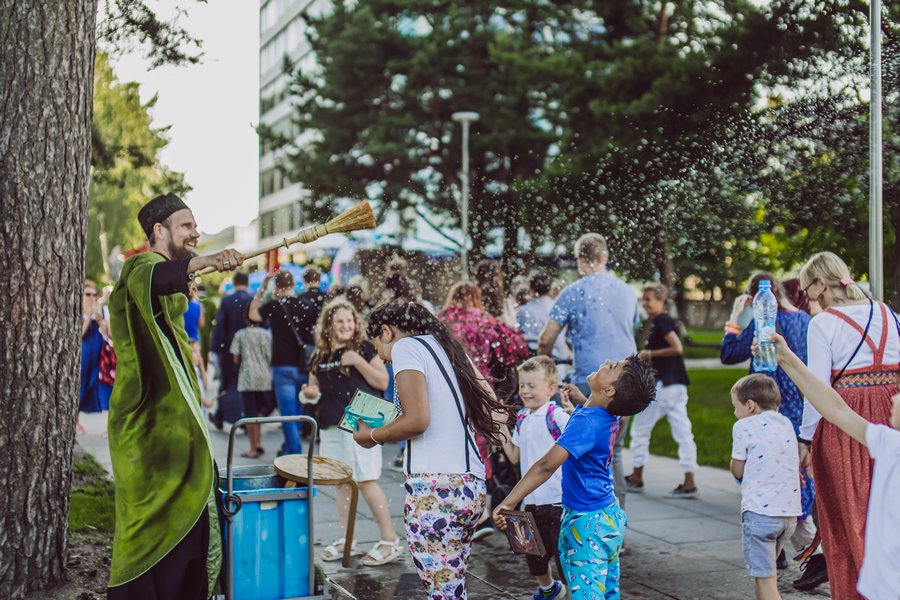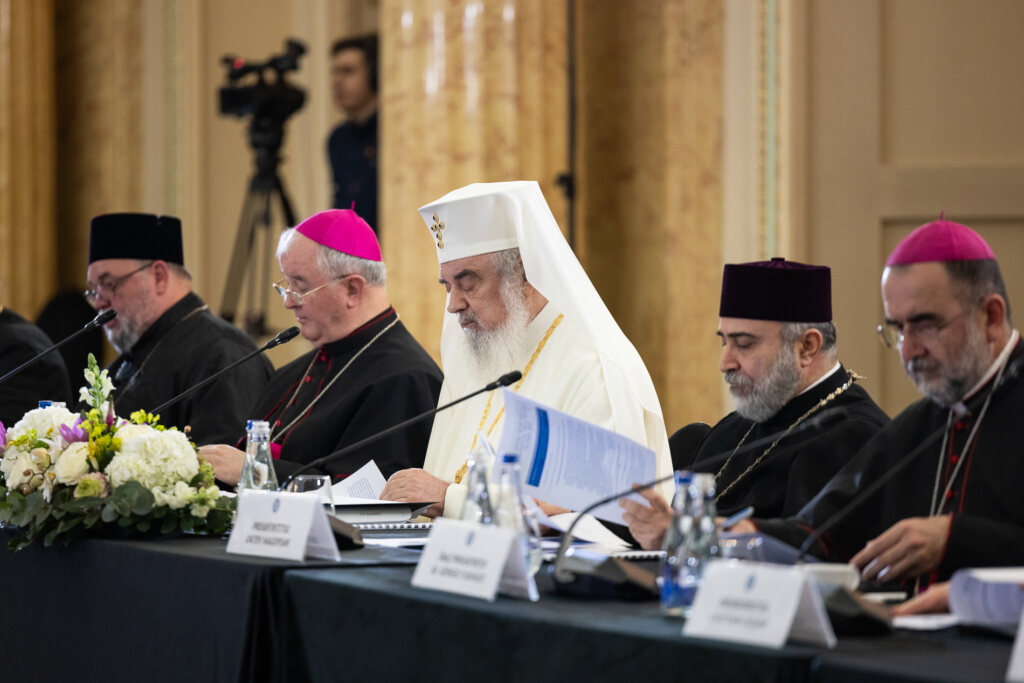Orthodox Calendar – May 3
Great and Holy Friday
On Great and Holy Friday, Christ died on the Cross. He gave up His spirit with the words: “It is finished” (John 19:30). These words are better understood when rendered: “It is consummated.” He had accomplished the work for which His heavenly Father had sent Him into the world. He became a man in the fullest sense of the word. He accepted the baptism of repentance from John in the Jordan River. He assumed the whole human condition, experiencing all its alienation, agony, and suffering, concluding with the lowly death on the Cross. He perfectly fulfilled the prophecy of Isaiah:
“Therefore I will divide him a portion with the great, and he shall divide the spoil with the strong; because he has poured out his soul to death, and was numbered with the transgressors; yet he bore the sins of many, and made intercession for the transgressors.”
(Isaiah 53:12)
The Man of Sorrows
On the Cross Jesus thus became “the man of sorrows; acquainted with grief” whom the prophet Isaiah had foretold. He was “despised and forsaken by men” and “smitten by God, and afflicted” (Isaiah 53:3-4). He became the one with “no form or comeliness that we should look at him, and no beauty that we should desire him” (Isaiah 53:2). His appearance was “marred beyond human semblance, and his form beyond that of the sons of men” (Isaiah 52:14). All these Messianic prophecies were fulfilled in Jesus as he hung from the Cross.
As the end approached, He cried: “My God, my God, why hast Thou forsaken me?” (Matthew 27:46). This cry indicated His complete identification with the human condition. He had totally embraced the despised, forsaken and smitten condition of suffering and death—alienation from God. He was truly the man of sorrows.
Yet, it is important to note that Jesus’ cry of anguish from the Cross was not a sign of His loss of faith in His Father. The words which He exclaimed are the first verse of Psalm 22, a messianic Psalm. The first part of the Psalm foretells the anguish, suffering and death of the Messiah. The second part is a song of praise to God. It predicts the final victory of the Messiah.
The Formal Charges
The death of Christ had been sought by the religious leaders in Jerusalem from the earliest days of His public ministry. The formal charges made against Him usually fell into the following two categories:
1) violation of the Law of the Old Testament, e.g., breaking the Sabbath rest;
2) blasphemy: making Himself equal with God.
Matters were hastened (consummated) by the moment of truth which followed His entrance into Jerusalem on Palm Sunday. He had the people behind Him. He spoke plainly. He said that the Sabbath was made for man, and not man for the Sabbath. He chastised the scribes and Pharisees for reducing religion to a purely external affair;
“You are like whitewashed tombs, which outwardly appear beautiful, but within are full of dead men’s bones and all uncleanness. So you also outwardly appear righteous to men, but within you are full of hypocrisy and iniquity” (Matthew 23:27-28).
It was the second formal charge; however, that became the basis for His conviction.
The Religious Trial
Christ’s conviction and death sentence required two trials: religious and political. The religious trial was first and took place during the night immediately after His arrest. After considerable difficulty in finding witnesses for the prosecution who actually agreed in their testimony, Caiaphas, the high priest, asked Jesus the essential question: “Are you Christ, the Son of the Blessed?” Jesus, who had remained silent to this point, now responded directly:
“I am; and you will see the Son of man sitting at the right hand of power, and coming with the clouds of heaven” (Mark 14:61-62).
Jesus’ reply recalled the many other statements He had made beginning with the words, “I am.” “I am the bread of life . . . I am the light of the world. . . I am the way, the truth, and the life. . . before Abraham was, I am.” (John 6 through 15). The use of these words themselves was considered blasphemous by the religious leaders. The words were the Name of God. By using them as His own Name, Jesus positively identified Himself with God. From the burning bush the voice of God had disclosed these words to Moses as the Divine Name:
“Say this to the people of Israel, ‘I AM has sent me to you’” (Exodus 3:13-14).
Now Jesus, as He had done on many other occasions, used them as His own Name. The high priest immediately tore his mantle and “they all condemned Him as deserving death” (Mark 14:64). In their view He had violated the Law of the Old Testament:
“He who blasphemes the name of the Lord shall be put to death” (Leviticus 24:16).
The Political Trial
The Jewish religious leaders lacked the actual authority to carry out the above law: to put a man to death. Such authority belonged to the Roman civil administration. Jesus had carefully kept His activity free of political implications. He refused the temptation of Satan to rule the kingdoms of the world by the sword (Luke 4: 1-12). He often charged His disciples and others to tell no one that He was , the Christ, because of the political overtones that this title carried for many (Matthew 16: 13-20). He rebuked Peter, calling him Satan, when the disciple hinted at His swerving from the true nature of His mission (Matthew 16:23). To Pilate, the spineless and indifferent Roman Governor, He said plainly: “My kingdom is not of this world” (John 18:36). Jesus was not a political revolutionary who came to free the people from Roman control and establish a new kingdom based on worldly power.
Nevertheless, the religious leaders, acting in agreement with the masses, devised political charges against Him in order to get their way. They presented Christ to the Romans as a political , leader, the “King of the Jews” in a worldly sense, a threat to Roman rule and a challenge to Caesar. Pilate became fearful of his own position as he heard the charges and saw the seething mobs. Therefore, despite his avowed testimony to Jesus’ innocence, he passed formal sentence, “washed his hands” of the matter, and turned Jesus over to be crucified (John 19:16).
Crucifixion—The Triumph of Evil
Before succumbing to this cruel Roman method of executing political criminals, Jesus suffered still other injustices. He was stripped, mocked and beaten. He wore a “kingly” crown of thorns on His head. He carried His own cross. He was finally nailed to the cross between two thieves at a place called Golgotha (the place of the skull) outside Jerusalem. An inscription was placed above His head on the Cross to indicate the nature of His crime: “Jesus of Nazareth, the King of the Jews.” He yielded up His spirit at about the ninth hour (3 p.m.), after hanging on the Cross for about six hours.
On Holy Friday evil triumphed. “It was night” (John 13:30) when Judas departed from the Last Supper to complete his act of betrayal, and “there was darkness over all the land” (Matthew 27:45) when Jesus was hanging on the Cross. The evil forces of this world had been massed against Christ. Unjust trials convicted Him. A criminal was released to the people instead of Him. Nails and a spear pierced His body. Bitter vinegar was given to Him to quench His thirst. Only one disciple remained faithful to Him. Finally, the tomb of another man became His place of repose after death.
The innocent Jesus was put to death on the basis of both religious and political charges. Both Jews and Gentile Romans participated in His death sentence.
“The rulers of the people have assembled against the Lord and His Christ.” (Psalm 2—the Prokeimenon of the Holy Thursday Vesperal Liturgy)
We, also, in many ways continue to participate in the death sentence given to Christ. The formal charges outlined above do not exhaust the reasons for the crucifixion. Behind the formal charges lay a host of injustices brought, on by hidden and personal motivations. Jesus openly spoke the truth about God and man. He thereby exposed the false character of the righteousness and smug security, both religious and material, claimed by many especially those in high places. The constantly occurring expositions of such smugness in our own day teach us the truly illusory nature of much so-called righteousness and security. In the deepest sense, the death of Christ was brought about by hardened, personal sin—the refusal of people to change themselves in the light of reality, which is Christ.
“He came to His very own, and His own received Him not” (John 1:11).
Especially we, the Christian people, are Christ’s very own. He continues to come to us in His Church. Each time we attempt to make the Church into something other than the eternal coming of Christ into our midst, each time we refuse to repent for our wrongs; we, too, reject Christ and participate in His death sentence.
Saint Irodion of Lainici
Saint Irodion was born in 1821 in Bucharest and received the name John at baptism. His parents gave him good education and taught him Christian behaviour ever since he was a child.
At that time, at Cernica Monastery, nearby Bucharest, under the guidance of Saint abbot George, disciple of Saint Paisios from Neamţ, the spiritual work of prayer and obedience was growing, work which would be continued by Saint abbot Callinicus, the future bishop of Râmnic.
Having heard of the fame of the spiritual life over there, young John, aged 22, asked for the blessing of his bodily parents and retired to Cernica Monastery, under the guidance of abbot Callinicus. There, the young novice was submitted to various trials and soon he passed through all forms of obedience, courageously resisting to all temptations.
Blessed John slept only three or four hours at night and spent all the rest of his time in prayer and prostrations. He was present at all the services in the church, which he attended with much spiritual joy, his lips always saying the prayer: “Jesus Christ, Son of God, have mercy on me, the sinner”.
In 1846, he was tonsured into monasticism with the name of Irodion and ordained deacon and, soon after, priest, according to the decision of his abbot Saint Callinicus. After ordination, blessed hieromonk Irodion fasted, prayed and made prostrations more than before, so that his new quality as a priest did not change anything in his way of living; on the contrary, made him even more humble towards all those around.
In 1850, following the insistence of ruler prince Barbu Ştirbei, Saint abbot Callinicus accepted to be bishop to the Eparchy of Râmnic. The worthy abbot shed many tears when he left the community of Cernica Monastery and took a few fathers with him to help him with the administration of the Diocese of Râmnic. One of those who accompanied him was Venerable Irodion, whom he appointed ecclesiarch at Lainici Skete, in 1851, when he also made him protosyncelos. Soon after that, Saint Callinicus would appoint protosyncelos Irodion igumen of this skete, where he would remain until the end of his life.
As soon as Venerable Irodion became igumen, he increased even greater the trials with more endeavour. For him, the greater responsibility to God and people, the greater endeavour had to be. Having seen Irodion’s thought and efforts, God bestowed great spiritual gifts into his heart. But the devil, the permanent enemy of the humankind, could not put up with the humbleness and spiritual efforts of Venerable Irodion, so that he hit him with his poisonous arrows.
Thus, that enemy entered into the hearts of some monastic brothers and brought to the blessed Irodion much bitterness. Some lay people came together with those rebels, successors of the founders of the skete, who were eager to rule the monastic community as they wished. Consequently, Venerable Irodion has been removed from leading that community for a while. But, being called back, God has blessed him with numerous spiritual gifts.
Soon, administrated by Venerable Irodion, Lainici Skete had gathered the biggest monastic community of Oltenia, exceeding even bigger and older monasteries. His fame was greater and greater so that when the father confessor of Saint Hierarch Callinicus, Bishop of Râmnic, died he decided to take Venerable Irodion as his spiritual father, although he was much younger than him and had been his disciple.
The gift of Father Irodion was really great because all those who came to him could find peace for their souls and hearts, healing of diseases and casting out bad spirits. Venerable Irodion lived an even stricter life and God bestowed even greater and richer gifts upon him, so that he came to foreknow what would happen. Given all the virtues Venerable Irodion had, Saint Hierarch Callinicus called him the “Morning Star from Lainici”, because he guided and advised many people on the path to salvation just like a star in the sky.
As a monk, his heart and mind were directed to heaven, but as abbot he took good care of the fathers and brethren of the monastery whom he protected from temptations and devilish attacks.
Saint Irodion performed a great act of love for his nation in 1877, when he sent 12 brothers from his monastery as health workers to look after the sick and injured in the War of Independence. He has also shown great love for the lay faithful in need, sending relief aid to the poor and hungry.
Venerable Irodion passed away on 3 May 1900. His relics were found on 10 April 2009 and laid at Lainici Monastery for veneration, where they can still be seen today.
On 29 October 2010, the Holy Synod of the Romanian Orthodox Church placed him among saints, being celebrated on 3 May.
Through his holy prayers, Lord Jesus Christ, our God, have mercy on us. Amen.
Troparion, tone 1
Spiritual Father of Saint Callinicus of Cernica, advisor of monastics and morning star of Oltenia, helper of those in need and wonderworker, oh, Holy Venerable Irodion, pray to Christ our God to save our souls.
Saints Timothy and Maura
They suffered for the faith during the persecution under the emperor Diocletian (284-305). Saint Timothy came from the village of Perapa (Egyptian Thebaid), and was the son of a priest named Pikolpossos. He was made a reader among the church clergy, and also a keeper and copyist of divine service books.
Saint Timothy was denounced as a keeper of Christian books, which the emperor ordered to be confiscated and burned. They brought Saint Timothy before the governor Arian, who demanded that he hand over the sacred books. They subjected the saint to horrible tortures for his refusal to obey the command. They shoved two red-hot iron rods into his ears, from which the sufferer lost his eyesight and became blind.
Saint Timothy bravely endured the pain and he gave thanks to God, for granting him to suffer for Him. The torturers hung the saint head downwards, putting a piece of wood in his mouth, and they tied a heavy stone to his neck. Saint Timothy’s suffering was so extreme, that even those who tortured him implored the governor to ease up on the torture.
About this time they informed Arian that Timothy had a young wife named Maura, whom he had married only twenty days before. Arian ordered Maura to be brought, hoping that with her present, they could break Saint Timothy’s will. Saint Timothy urged his wife not to fear the tortures, but to follow his path. Saint Maura answered, “I am prepared to die with you,” and she boldly confessed herself a Christian. Arian commanded that the hair be torn from her head, and to cut the fingers off her hands.
Saint Maura underwent the torment with joy and even thanked the governor for the torture, which she endured so that her sins might be forgiven. Then Arian gave orders to throw Saint Maura into a boiling cauldron, but she did not feel any pain, and she remained unharmed.
Suspecting that the servants had filled the cauldron with cold water out of sympathy for the martyr, Arian went up and ordered the saint to splash him on the hand with water from the cauldron. When the martyr did this, Arian screamed with pain and drew back his scalded hand. Then, momentarily admitting the power of the miracle, Arian confessed God in Whom Maura believed as the True God, and he ordered her to be released. But the devil still held great power over the governor, and soon he again began to urge Saint Maura to offer sacrifice to the pagan gods.
Having gotten nowhere, Arian was overcome all the more by a satanic rage and he came up with new tortures. Then the people began to murmur and demand a stop to the abuse of this innocent woman. But Saint Maura, turning to the people, said, “Let no one defend me. I have one Defender, God, in Whom I trust.”
Finally, after torturing them for a long time, Arian ordered the martyrs to be crucified. For ten days they hung on crosses facing each other.
On the tenth day of martyrdom the saints offered up their souls to the Lord. This occurred in the year 286. Later, a solemn celebration of the holy martyrs Timothy and Maura was instituted at Constantinople, and a church was built in their honor.
Tr by oca.org
